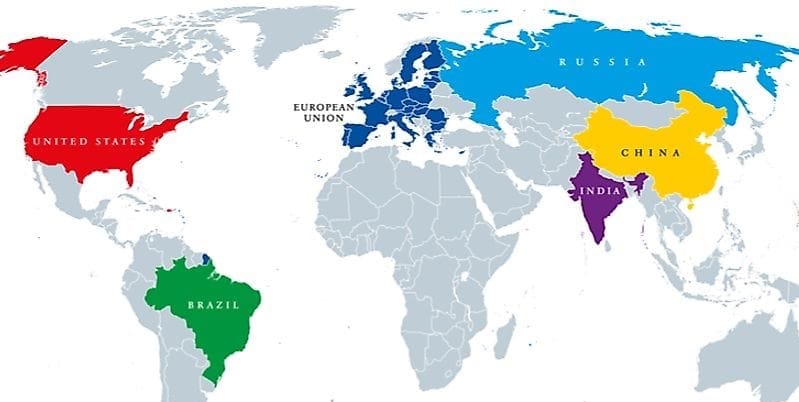Who Will Be the Next Superpower? A Look at the Global Landscape with Russia’s Role

As global dynamics shift in the 21st century, several countries are positioning themselves as potential superpowers. While the United States has long held dominance, emerging economies like China and India, along with Russia and the European Union, are key contenders in this new geopolitical environment. Each nation has distinct strengths, but they also face considerable challenges that will influence their trajectories in the coming decades.
China: The Leading Contender
China’s rapid economic growth over the past four decades has made it a formidable global player. In 2024, China’s economy is the second largest in the world, with a GDP surpassing $19 trillion. The country leads in key technological sectors, including artificial intelligence, 5G, and renewable energy. China’s Belt and Road Initiative (BRI) further extends its influence by connecting Asia, Africa, and Europe through massive infrastructure investments.Militarily, China is rapidly modernizing, expanding its naval capabilities, and increasing its strategic reach, particularly in the South China Sea. Its ambition is underscored by its growing space program and cyber warfare capabilities. However, internal challenges such as an aging population, high debt levels, and regional tensions—especially regarding Taiwan—pose obstacles to China’s rise. Despite these issues, China is the most prominent contender for superpower status.
India: A Rising Power with Immense Potential
India, with over 1.4 billion people, is a major player on the rise. It has a young, expanding workforce and is making strides in sectors like information technology, pharmaceuticals, and space exploration. India’s growing middle class and democratic institutions provide it with soft power that resonates globally. Its military is also rapidly modernizing, with a focus on nuclear capabilities and expanding its naval and air forces.
However, India faces significant challenges. It still grapples with poverty, infrastructure gaps, and internal political divisions. Yet, its strategic position in South Asia and the Indo-Pacific, combined with its economic potential, makes India a key player in the future global order.
Russia: A Military Giant in Transition
Russia, though economically smaller than China or the U.S., remains a key player due to its military power and geopolitical influence. Russia has one of the largest nuclear arsenals in the world and significant energy resources, making it a major player in global energy markets. Its military engagements, particularly in Ukraine and Syria, demonstrate its willingness to exert influence beyond its borders.
Despite its military strength, Russia’s economic challenges limit its potential. Reliance on energy exports, compounded by sanctions following its invasion of Ukraine, hampers its long-term growth. Furthermore, a shrinking population and brain drain are internal problems that Russia must address to sustain its influence. Nonetheless, its strategic positioning and military capabilities keep it in the conversation as a global power.
The United States: A Superpower Facing New Challenges
The U.S. remains the world’s largest economy and its military power is unmatched. The country leads in technological innovation, financial markets, and cultural influence. However, the U.S. faces internal challenges, including political polarization, rising inequality, and external competition from emerging powers like China and India. Despite these issues, the U.S. is likely to remain a central global player for the foreseeable future.
The European Union: A Collective Superpower
The European Union, though not a single nation, wields considerable global influence through its combined economic and political clout. The EU is a leader in trade, environmental regulation, and digital governance. However, its internal divisions on foreign policy and military matters hinder its potential to emerge as a unified superpower. Should the EU continue to integrate more deeply, particularly in defense and foreign policy, it could become a significant global power.
A Multipolar Future?
The world is increasingly heading towards a multipolar future, where several countries or blocs—China, the U.S., India, Russia, and the EU—share influence. Regional powers like Brazil and Japan, as well as non-state actors like multinational corporations and international organizations, will also shape global governance. Rather than one dominant power, the next few decades could see a more balanced global structure where multiple nations influence different spheres—economy, military, and diplomacy.
In conclusion, while the U.S. remains a strong global leader, China and India are rising fast, and Russia retains significant military power. The future global order is likely to be more multipolar, with various nations and regions sharing responsibilities in shaping global affairs.
